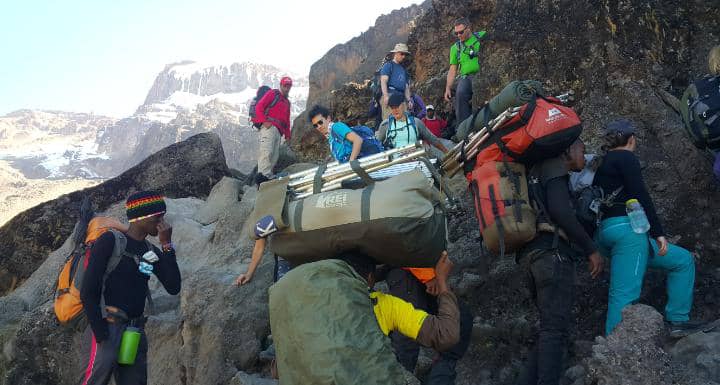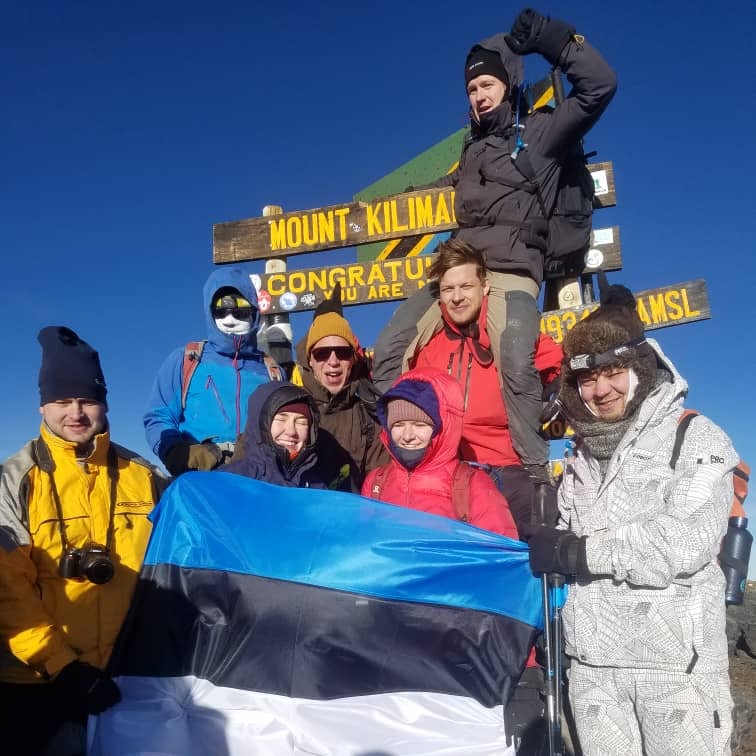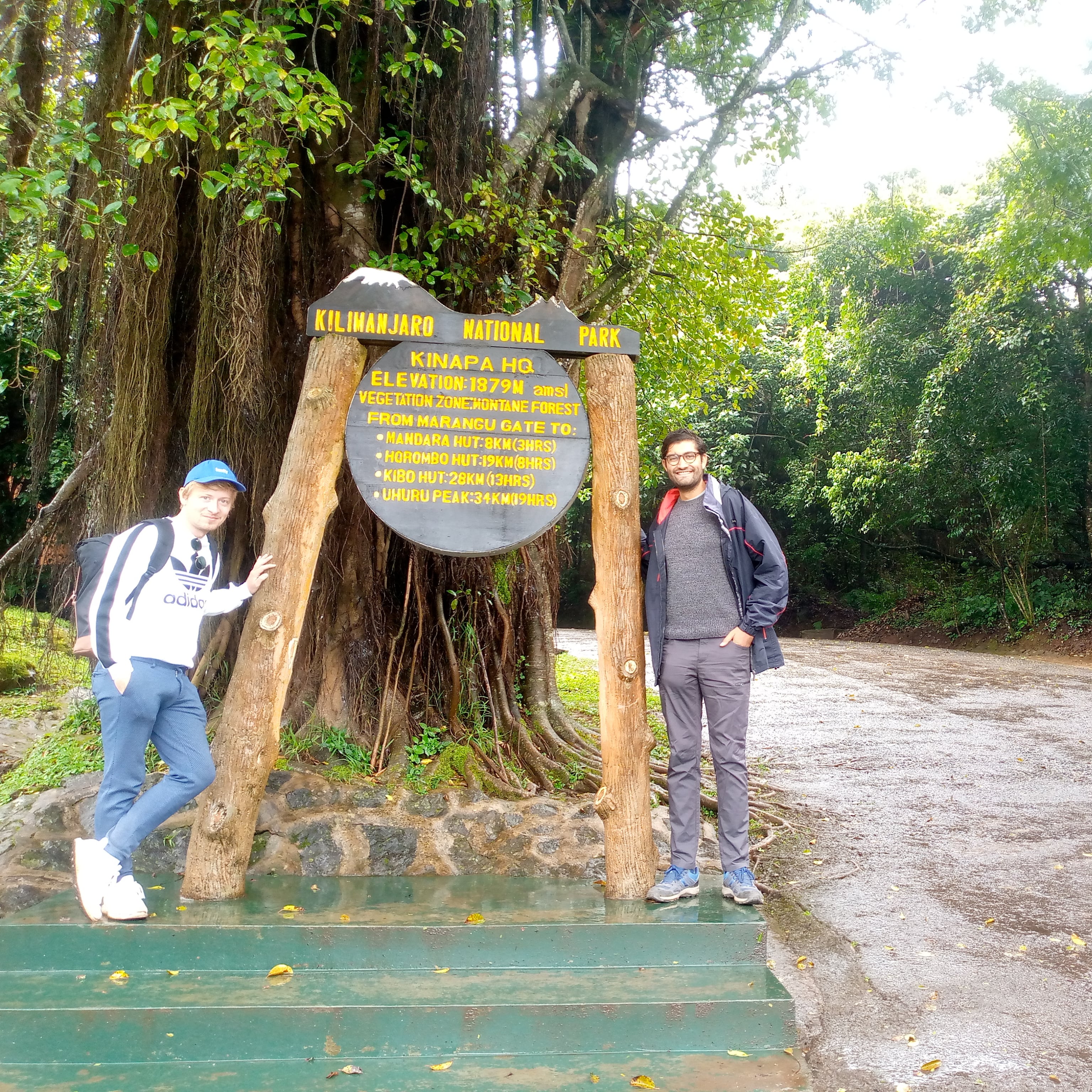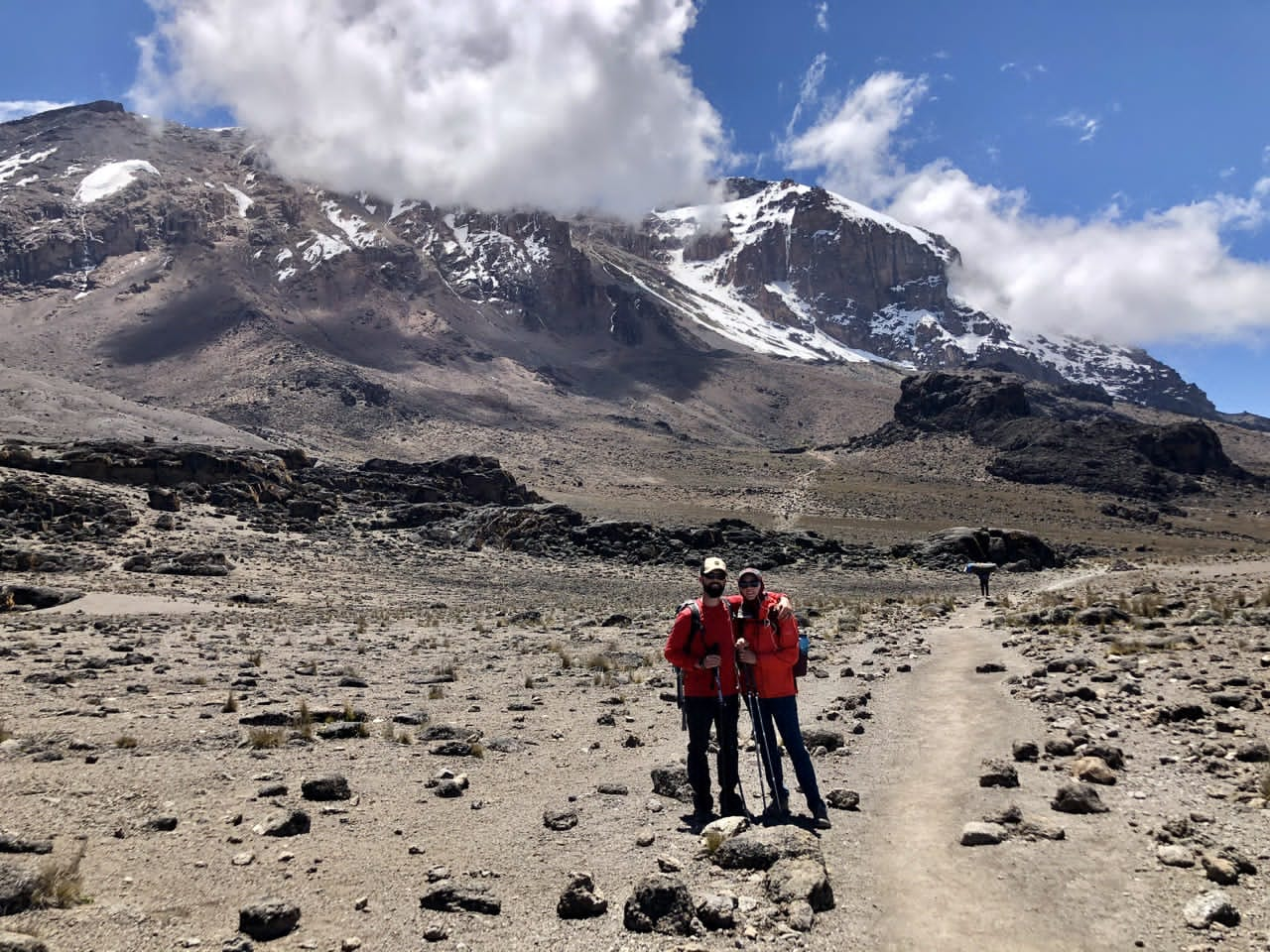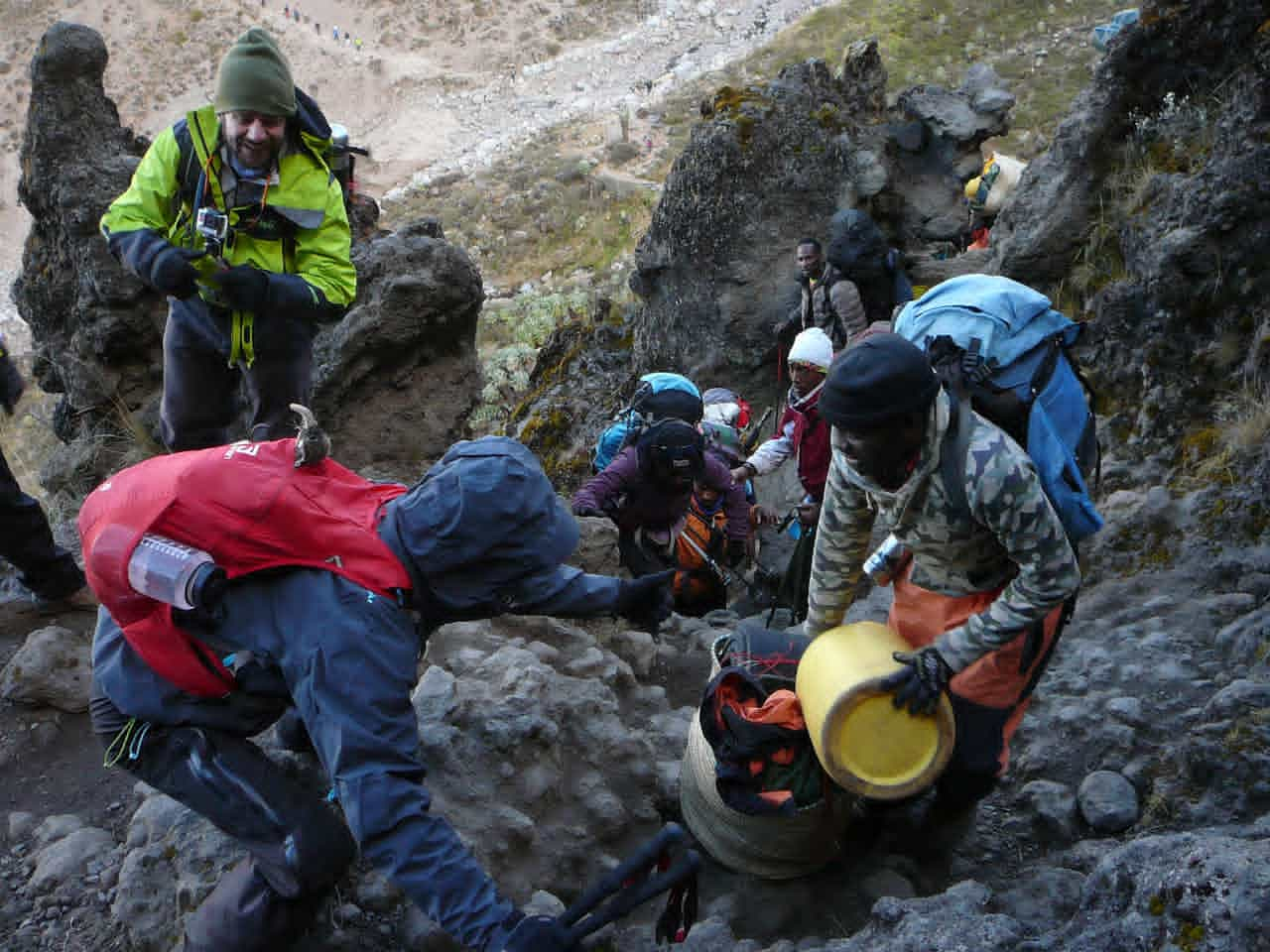Climb Mount Kilimanjaro 8 Days Lemosho Route
The Lemosho Route, situated on the western side of Mount Kilimanjaro, is renowned for its breathtaking scenery and quieter trails, making it one of the most rewarding paths to the summit. This 8-day adventure begins in the rich, green rainforest at Mti Mkubwa (Big Tree Camp), the first ecological zone encountered on the mountain. From there, the route ascends to Shira One Camp, crossing the vast and stunning Shira Plateau once the third volcanic peak of Kilimanjaro before its dramatic collapse. The journey continues northeast to Shira II Hut, where trekkers benefit from a key acclimatization stop, with opportunities for short hikes and spectacular panoramic views of the surrounding highlands.
Next, the trail ascends to Lava Tower (4,630m), offering dramatic views and an important acclimatization point before descending into the breathtaking Barranco Valley considered one of the most scenic parts of the climb. After an overnight at Barranco Camp, trekkers face the iconic Barranco Wall, a challenging yet exhilarating climb that rewards with sweeping vistas. The route then continues along the Southern Circuit, passing through Karanga Camp, the final water point before reaching Barafu Hut, the high camp positioned for the summit push.
The summit attempt begins in the early morning hours often under a blanket of stars or the glow of a full moon creating a surreal and unforgettable experience. This final ascent is both the coldest and most physically demanding part of the trek. As dawn breaks, climbers are rewarded with a stunning sunrise over the African plains. Upon reaching Uhuru Peak (5,895 meters), the highest point in Africa, you'll have the opportunity to celebrate your achievement and take in the panoramic views from the Roof of Africa. After the summit, the descent leads back to Barafu Camp for a short rest before continuing down via the Mweka Trail to Mweka Hut, where your incredible Kilimanjaro adventure concludes. For Complete Itinerary and Details for the 8-Day Kilimanjaro Climb via the Lemosho Route, click the link below.
In the morning, after breakfast, we will depart from Moshi and drive to Lemosho Gate, located on the western side of Kilimanjaro National Park. Upon arrival, we will complete the registration process and finalize preparations for the start of your unforgettable Kilimanjaro trekking adventure.
Before beginning the trek, there will be a brief preparation period as our team of guides, chefs, and porters organizes the supplies and equipment necessary for your eight-day journey. This includes arranging essential gear and provisions. Meals will be freshly restocked from town after the third day on the mountain. During this time, you’ll have a chance to relax and enjoy lunch in the peaceful natural setting of Lemosho Gate. The preparation process typically takes 1 to 2 hours before we officially set off on the trail.
DAY-1 : LEMOSHO TO MTI MKUBWA CAMPStarting 1800m Lemosho Gate.
Ending 2750m Mti Mkubwa Camp.
Altitude gain today 1200m.
Trekking distance 6kms.
Walking hours 3-4 hours.
Overnight hut Mti Mkubwa Camp.
Elevation Zone Rainforest/MontaneForest.
Once the team is organized and registration is complete, we will begin our trek through the lush, dense rainforest. This initial section of the trail offers a truly immersive experience, with towering eucalyptus trees, a rich variety of birdlife, and the chance to spot black-and-white colobus monkeys leaping through the canopy. The path is also lined with vibrant wildflowers such as Impatiens kilimanjari and Impatiens pseudo-viola, adding bursts of color to the verdant landscape.
As we make our way through the rainforest, rain is always a possibility, often making the trail muddy and slippery. To ensure a safer and more comfortable hike, gaiters and trekking poles are highly recommended. While shorts and T-shirts are typically comfortable for this section, it’s essential to keep rain gear and warmer clothing easily accessible, as weather conditions can change quickly.
DAY-2 : MTI MKUBWA CAMP TO SHIRA ONE (1) CAMP.Starting 2750m Mti Mkubwa Camp
Ending 3620m Shira One (1) Camp
Altitude gain today 870m
Trekking distance 7kms
Walking hours 5-6 hours
Overnight hut Shira One (1)
Elevation Zone Heather and Moorland
The trek continues from Mti Mkubwa to Shira One, transitioning from lush rainforest into the gentle heather and moorland zone. The trail ascends a steep, rocky ridge known as Mgongo wa Tembo (Swahili for “the elephant’s back”), offering a scenic and rewarding challenge. Upon reaching Shira One Camp, you’ll find yourself on the expansive Shira Plateau, a dramatic landscape with breathtaking views of Kilimanjaro’s great Western Breach and its striking glaciers.
The path from Shira One to Shira Two is dusty, narrow, and steep, offering the opportunity to encounter unique flora, including moorland lobelias, gladiolus flowers, groundsels (Senecio Kilimanjari), and the striking dark obsidian rock formations characteristic of the region. As night falls at the exposed Shira Camp, temperatures will drop significantly, often plummeting well below freezing. To ensure a restful night’s sleep, it's essential to add extra layers of clothing before settling in, ensuring warmth and comfort in the challenging alpine conditions.
DAY-3: SHIRA ONE (1) CAMP TO SHIRA TWO (2) CAMP .Starting 3620m Shira One (1) Camp
Ending 3950m Shira Two (2)Camp
Altitude gain today 330 m
Trekking distance 9 km
Walking hours 4-5 hours via Shira peak 3820m
Overnight hut Shira Two (2) Camp
Elevation Zone Moorland and Alpine Desert zone
This section of the trek is shorter and less strenuous compared to the previous day, offering a more relaxed experience. The trail crosses a plateau of grassy moorland and heather, dotted with volcanic rock formations. Along the way, trekkers can enjoy spectacular views of Shira Peak, Mount Kilimanjaro, and Mount Meru, with the landscape constantly changing, providing a variety of terrain to explore.
The path is adorned with unique vegetation, including the towering Senecio Kilimanjari, which can grow over 9 meters high, as well as fascinating plants like lobelias, gladioluses, and wild protea. Reaching the top of Shira Peak, at an altitude of 3,820m, you will find yourself above the clouds, rewarded with panoramic views of the expansive Shira Plateau and its breathtaking landscape, stretching across the horizon.
The walk from Shira One to Shira Two serves as an essential acclimatization day, helping to improve your chances of reaching the summit of Kilimanjaro. This shorter day provides an opportunity to adjust to the altitude while enjoying the breathtaking scenery that surrounds you. The route offers panoramic views of the Shira Plateau and, on clear days, you can see the looming silhouette of Mount Meru in the distance, creating a perfect balance of relaxation and stunning views.
DAY-4 ; SHIRA TWO CAMP TO BARANCO CAMPStarting 3950m Shira Two
Acclimatization 4600m Lava Tower
Ending 3920m Baranco Camp
Altitude gain today 980m
Trekking distance 10kms
Walking hours 6-7 hours
Overnight hut Baranco Camp
Elevation Zone Moorland and semi-desert zone
From the Shira Two camp, the team will continue east, ascending a steep and rocky trail towards Lava Tower Camp at 4,600m. The trek to Lava Tower is long and challenging for some climbers, with the altitude making the climb physically demanding.
The Lava Tower, a large volcanic rock formation, stands as a reminder of Mount Kilimanjaro’s ancient glaciation. It is an impressive sight and offers spectacular views of the surrounding terrain.
However, this is also the point where some climbers begin to feel the effects of acute mountain sickness (AMS), which can include symptoms such as breathlessness, irritability, and headaches. It's a reminder of the importance of taking things slow, staying hydrated, and resting if needed. This part of the journey is crucial for acclimatization, and it’s important to listen to your body and seek guidance from your guides if you start to feel unwell.
After a well-deserved lunch at Lava Tower, the team will descend nearly 680 meters to Barranco Camp at 3,920m. This descent, although challenging, is crucial for acclimatization as it allows the body to adjust to the higher altitude. Upon reaching Barranco Camp, you’ll be greeted by one of the most stunning landscapes on Mount Kilimanjaro. The camp is nestled in a picturesque location with dramatic views of the Barranco Wall and the surrounding peaks, making it a prime spot for photography. Barranco Camp is also known as one of the most beautiful camps on the mountain and serves as a junction where four different routes converge, all ultimately leading to the summit. It’s a vibrant and lively camp, filled with trekkers from various routes, making for an unforgettable experience. The beauty and tranquility of Barranco Camp will surely leave a lasting impression as you rest and prepare for the challenges ahead.
DAY-5 ; BARRANCO CAMP TO KARANGA HUT.Starting elevation 3920m Baranco Camp
Acclimatization point 4280m Top of Barranco Camp
Ending elevation 4010m Karanga Camp
Altitude gain today 270 m
Trekking distance 5 km
Walking hours 4-5 hours
Overnight hut Karanga Camp
Elevation Zone Moorland and Alpine Desert zone
Today's trek is a shorter and enjoyable journey of about 5km, offering breathtaking afternoon views.
The day begins with one of the most challenging sections of the route—the ascent of the Barranco Wall, often referred to as the "Breakfast Wall" as it’s tackled shortly after breakfast. Though it may appear daunting from a distance, the climb is surprisingly manageable due to the zig-zag path that makes the ascent more accessible. The climb involves some light rock scrambling, adding a touch of adventure.
At the top of Barranco Wall, climbers will find themselves above the clouds, rewarded with stunning panoramic views of the Heim Glaciers, Kerstin Glaciers, and the striking mountain landscape. From here, the trail becomes gentler, with a series of ups and downs as you walk along a ridge that showcases the stark beauty of the desert contrasted with patches of vegetation. The trek continues until reaching Karanga Camp, a spot designed for acclimatization and rest. This shorter day is crucial for adjusting to the altitude, improving the chances of successfully summiting Mount Kilimanjaro’s highest point.
DAY-6 ; KARANGA CAMP TO BARAFU CAMP.Starting 4010m Karanga Camp
Ending 4600m Barafu Camp
Altitude gain today 590m
Trekking distance 4kms
Walking hours 3-4 hours
Overnight hut Barafu Camp
Elevation Zone alpine-desert zone
Today’s walk is the shortest of the trek, covering only 4 km. Despite the brief distance, the high altitude makes this leg challenging. The air becomes noticeably drier, often causing heavy breathing. Stay positive and follow your guide’s pace, as they will adjust the speed to help everyone acclimatize and maintain steady breathing while ascending.
Barafu Camp, situated on an exposed ridge, is rugged and rocky, offering stunning views of the surrounding landscape. Upon arrival, you’ll enjoy a well-earned lunch and have the afternoon to rest. This downtime is crucial for conserving energy and preparing for the night’s summit attempt.
An early dinner will be served before you head to bed. The summit push begins at midnight, as you make your way toward Uhuru Peak, the highest point in Africa. Rest well and get ready for the adventure of a lifetime.
Starting 4600m Barafu Camp
Via Stella 5720m Stella point
Ending elevation 5895m UHURU PEAK
Altitude gain today 1295m
Trekking distance 5-7kms
Walking hours 6-8 hours
Elevation Zone desert zone ice-capped summit
The trek from Barafu Camp to Stella Point is the most mentally and physically demanding part of your Mount Kilimanjaro climb. However, with determination and the sense of achievement upon reaching your goal, you’ll realize that this is Kilimanjaro time—a once-in-a-lifetime experience.
The journey begins at midnight, with a challenging ascent from Barafu Camp (4,600m) to Stella Point (5,720m). This steep climb pushes your limits, but once you reach Stella Point, the toughest part is behind you. Stella Point marks the top of the ridge, but it’s not the highest point. That honor belongs to Uhuru Peak at 5,895m (Uhuru means "freedom").
From Stella Point, the path to Uhuru Peak is much easier and typically takes 45 minutes to 1 hour. Reaching the summit is a triumphant moment—you’ve conquered the world’s tallest free-standing mountain and the highest point in Africa! Take a moment to celebrate and capture the breathtaking views with photos. However, it’s not safe to remain at the summit for long, as the effects of altitude sickness can set in quickly. A stay of 10–15 minutes is recommended before starting your descent.
The descent begins from Uhuru Peak back to Barafu Camp via the same route. The journey downhill takes 2–3 hours. Upon arrival at Barafu, you’ll have a short rest and enjoy lunch before continuing the descent to Mweka Hut.
Starting 4600m Barafu Camp
Ending 3100M Mweka Camp
Altitude Lost today 1500m
Trekking distance 7kms
Walking hours 3-4 hours
Overnight hut Mweka Camp
Elevation Zone moorland and alpine-desert zone
After a well-deserved rest and lunch at Barafu Hut, we continue our descent toward Mweka Hut. The journey takes you downhill through diverse ecological zones, from the alpine desert and heath to the moorland, and finally back into the lush rainforest zone, passing through Millennium Camp (3,770m) along the way.
The trek today is long and demanding, spanning approximately 16 hours, including fewer breaks. Exhaustion is inevitable, especially after beginning the summit push at midnight. However, for those who made it to the top, the sense of achievement outweighs the fatigue. Many climbers reflect on this day as a defining moment of resilience and determination, often exclaiming, “Climbing Kilimanjaro is not difficult—train to prepare, not to fear! It’s all about mindset. Stay positive, and you’ll succeed!” Reaching Mweka Hut signifies the final stretch of your Kilimanjaro adventure, offering an opportunity to rest, reflect, and celebrate your remarkable accomplishment.
DAY-8; MWEKA CAMP TO MWEKA GATE TO MOSHI TOWNStarting 3100M Mweka Camp
Ending 1820M Mweka Gate
Altitude Lost today 1280m
Trekking distance 8kms
Walking hours 2-3 hours
Overnight hut Moshi Town
Elevation Zone Rain forest zone
The great day has arrived! After seven days on the mountain without a shower, the thought of a hot bath is on everyone’s mind.
Today’s trek takes us back through the lush rainforest, a journey rich with natural beauty. Along the way, you may spot various species of monkeys and the endemic Impatiens kilimanjari flower, a beautiful reminder of Kilimanjaro’s unique ecosystem.
Upon reaching Mweka Gate, climbers are required to sign out of the park. For successful climbers, a special moment awaits—receiving a certificate of completion: Green Certificate: Awarded to those who reached Stella Point (5,685m). Gold Certificate: Awarded to those who reached Uhuru Peak (5,895m), the summit of Kilimanjaro.
After receiving your certificate, you'll be driven back to your hotel in Moshi or Arusha, where you can finally enjoy that long-awaited hot shower and a well-deserved celebration. This is also a great time to express your appreciation to the team by handling tips for the guides, chefs, and porters who supported you throughout the climb.
From here, we will assist you with plans for your next destination, whether it's heading to the airport for your return flight or embarking on an exciting safari tour to explore more of Tanzania’s breathtaking natural wonders. The adventure doesn’t have to end here—there’s so much more to discover in this beautiful country!
The tourist will have to pay $2485.00(P/P) price based on 2 person include the following services as it listed on the table below. for any query please call us or send us a message for clarifications from our team. Book This Package Now
Why Book Kilimanjaro Climbs for Your Clients with Us?
African Treks and Cycling Safari Adventures has a Local Expertise & Passionate Team. As we are a locally owned company with deep roots in Tanzania. Our experienced mountain guides, porters, and support staff are professionally trained and intimately familiar with Kilimanjaro's terrain, climate, and cultural significance.
Authentic Experiences ; We go beyond the mountain! Our treks include cultural connections with local communities, unique cycling safaris, and off the-beaten-path adventures that provide a deeper look into Tanzania. Customizable Itineraries ; We offer flexible programs and can create tailor-made itineraries to match your clients’ fitness level, interests, and travel schedule perfect for families, beginners, or experienced climbers. Ethical & Responsible Tourism ; We are committed to fair treatment of porters and guides, environmental conservation, and supporting local economies through responsible travel.
All Inclusive, Transparent Pricing; Our packages include airport transfers, accommodations, meals, gear (including tents and mattresses), park fees, and support staff no hidden costs. Outstanding Client Support ; From the moment your clients arrive in Tanzania until their departure, we offer 24/7 support, warm hospitality, and personalized service to ensure a smooth and memorable journey.
SERVICES WE OFFER FOR KILI TREKKING
Airport pickup on arrival and return on departure time .
2 Nights hotels, meaning full one before climb and after climb.
All transfers to the mountain and back to Moshi town.
Professional, experienced, mountain guides, cookers, and porters
Guides, Porters, and Cooker salaries.
waterproof, four-season mountain sleeping tents (on twin sharing basis).
Sleeping Mattress.
Emergency Oxygen Cylinder.
Three meals on Mountain (breakfast, lunch, and dinner).
Purified or Boilled drinking water while on the Mountain.
Mess tents with tables and outdoor chairs.
VAT (18% ) and All government fees.
SERVICES WE NOT OFFER FOR KILI TREKKING
Tanzania Visa.
Hotels and Transfers (available as an optional add-on).
Personal trekking equipment such as sleeping bags, hiking boots, clothes, etc (available for rent in here Tanzania too; don't stress if you forget some of the trekking equipment).
Tips and gratuities (Recommended Tipping Amount Per Day; Head guide $20++; Ass.Guide $18++;, cooker $15++;, Summit Porter $12++;, Waiter $12++;,
Porter $10++;).
Portable flush toilet with the toilet tent as an add-on, please see we will need you to pay an extra 150$ per toilet.
Travel insurance.
Personal Expenses (e.g. laundry, telephone, beverages, etc.).
Meals not listed in the itinerary.
Liquors, beers, and bottled beverages.
Related Mount Kilimanjaro Best Routes Options
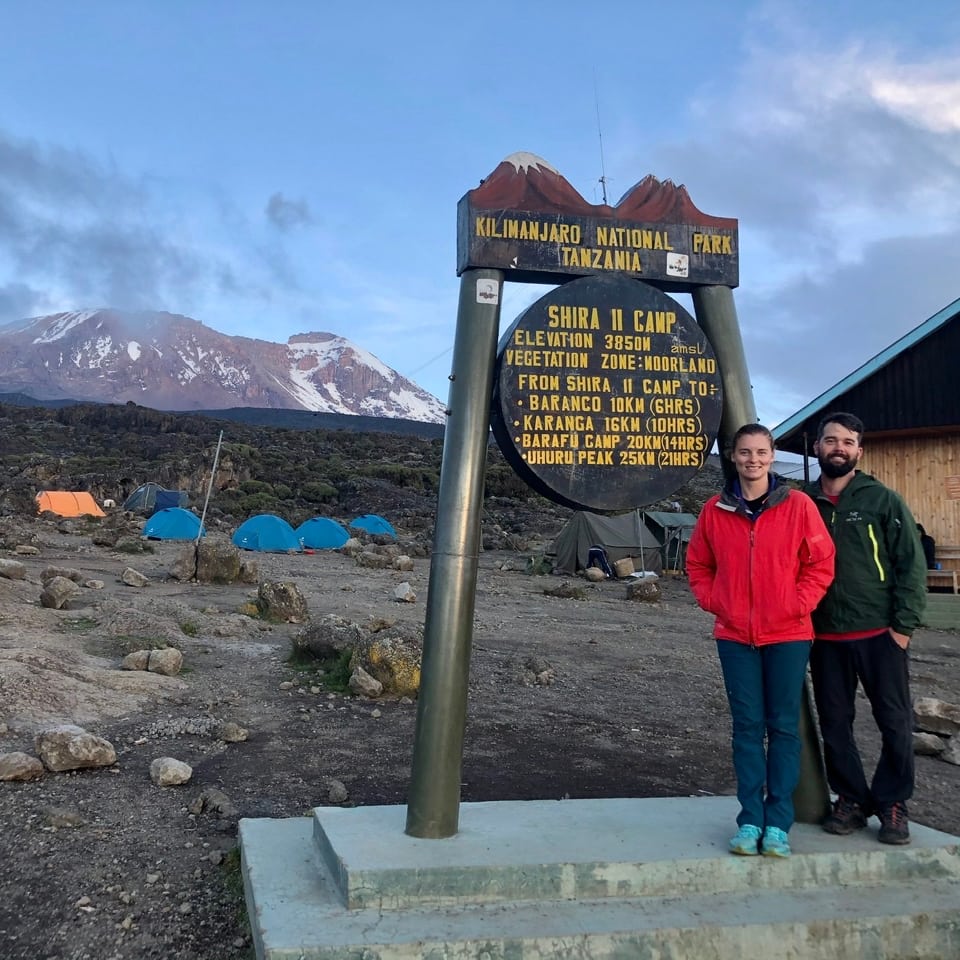
$2485.00(P/P)
Lemosho is extremely beautiful and offers a partly untouched landscape as well as varied flora and fauna. Also for the best successful climb.
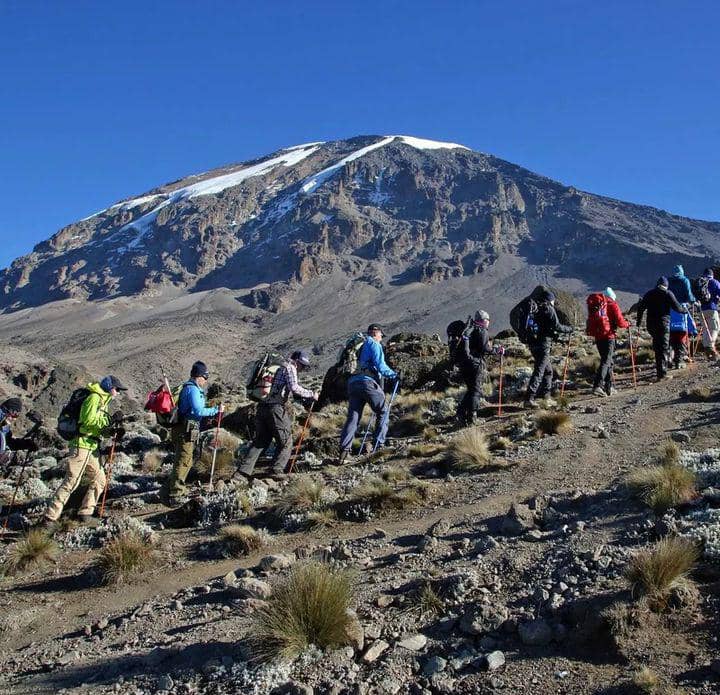
$2315.00(P/P)
Machame Route is the second most popular route to summit Mt.Kili after the Lemosho route, the route approaches from south-west.

$1865.00(P/P)
Marangu route is widely known as a Coca-Cola route due to its easiest and comfortability, the only way offer hut and beds on the mountain.


